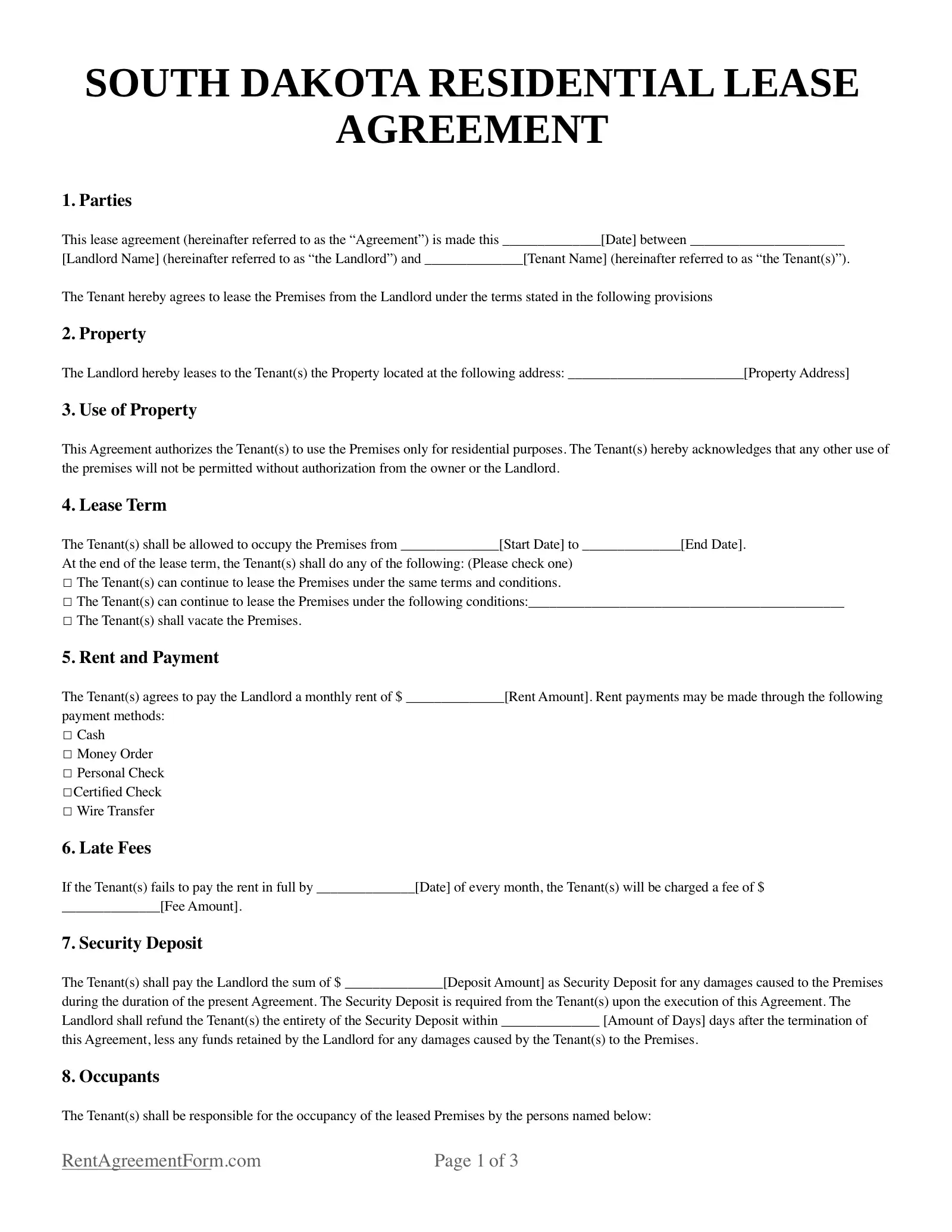South Dakota Residential Lease Agreement Form
If you are relocating to South Dakota to be closer to family or a new job or making an interstate move to accommodate your household’s needs, you must look for residential real estate that matches your preference and lifestyle. And once you find a place to live, the next steps are submitting the rental application and solidifying a residential lease agreement.
Once the landlord approves the prospective tenant’s rental application, the parties can proceed with the residential lease agreement. This legal document defines the terms and conditions of a tenant’s stay in a residential property.
The residential lease agreement form should include:
- the rent amount
- due date
- upkeep
- maintenance duties
- other important terms
It should outline all rights and responsibilities of the landlord and the tenant.
We have a printable template of the residential lease agreement form online that you can download in order to move forward with the leasing process.

Required Disclosures
The following disclosures are mandatory for South Dakota landlords:
- Methamphetamine Contamination Disclosure
South Dakota landlords are required to disclose any known contamination that currently exists or previously existed in the room, unit, or property for lease, especially if it was used to manufacture methamphetamine products.
"In any hiring of a residential premises, any lessor who has actual knowledge of the existence of any prior manufacturing of methamphetamines on the premises shall disclose that information to any lessee or any person who may become a lessee" (South Dakota Codified Law § 43-32-30).
- Lead-Based Paint Disclosure
It is standard practice for South Dakota landlords to disclose risks linked to lead-based paint in rental properties built before 1978, as stipulated in federal law. Prospective tenants must receive an EPA-approved pamphlet and be informed of any known record of safety hazards or the presence of lead-based paint on the property (Lead-Based Paint Hazard Reduction Act of 1992 § 1018).
Rent Grace Period
South Dakota statutes do not dictate when tenants should pay rent. There is currently no mandated rent grace period, either.
If the tenant fails to pay rent on the due date indicated in the lease agreement, the landlord must give them at least three days’ notice to quit and then proceed with eviction proceedings.
South Dakota has no maximum penalty fee for late rent payments.
Security Deposits
South Dakota laws state that landlords can charge a maximum of one month’s rent as a security deposit unless otherwise stated in the lease agreement. A larger deposit might be necessary if circumstances pose risks to the property.
South Dakota landlords may ask prospective tenants for an additional pet deposit unless the tenant is a person with a disability who uses a service animal for assistance.
Landlords have 14 days to return any balance or unused portion of the deposit to their tenants—this is under the assumption that there are no deductions and the tenant did not break the lease agreement. Meanwhile, landlords have 45 days to prepare an itemized list of deductions from the security deposit for the following reasons:
- Unpaid rent
- Contract breaches that resulted in financial damage
- Cost of damages due to the tenant’s failure to comply with their lease obligations
The security deposit is refundable unless it is a case of early termination. Landlords also cannot deduct the cost of repair for normal wear and tear (South Dakota Codified Law § 43-32-6.1).
Helpful Resources
Codified Law 43-32 | South Dakota Legislature Landlord and Tenant - South Dakota Consumer Protection